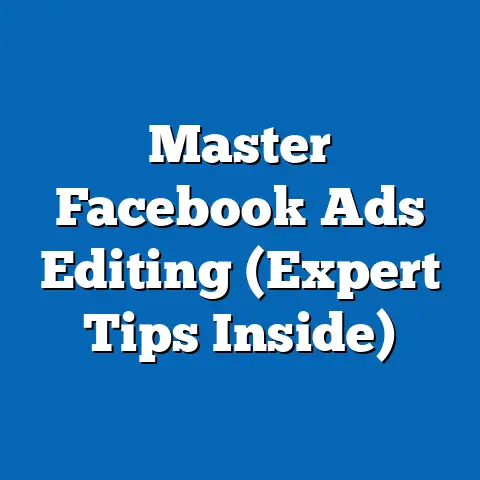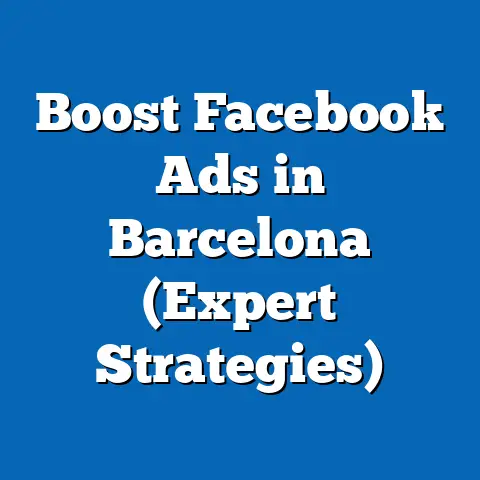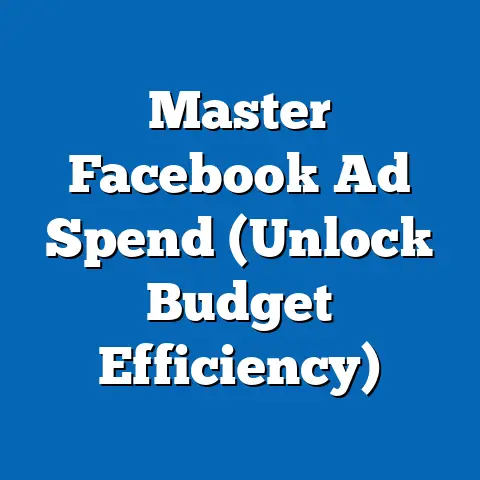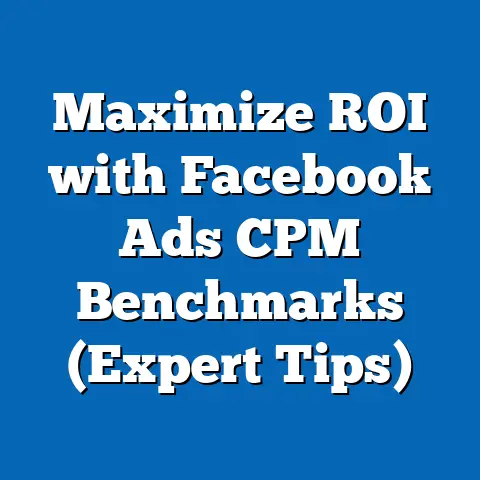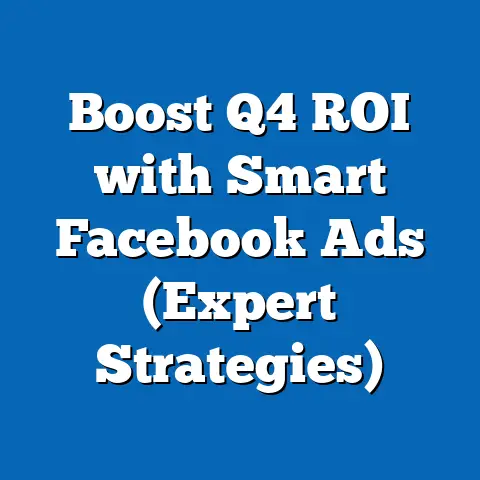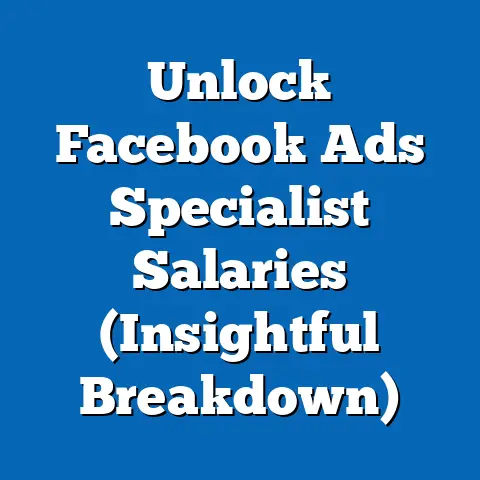Maximize Facebook Ads with CSV Emails (Targeting Strategy)
In the digital age, advertising has undergone a radical transformation. I remember the days when businesses would cast a wide net, hoping to catch a few interested customers with generic messaging and broad demographic targeting. It was like shouting into a crowded room and hoping someone would hear you. The result? Wasted ad spend, low engagement rates, and a general sense of frustration.
But those days are fading fast. We’re now in the era of personalized marketing, where data-driven strategies reign supreme. It’s about understanding your audience intimately, their needs, their desires, and then crafting campaigns that speak directly to them. This is where Facebook Ads, combined with the power of CSV email lists, becomes a game-changer. By allowing advertisers to reach specific segments of their audience with tailored messages, this approach maximizes advertising effectiveness and drives real results. In this guide, I’ll walk you through everything you need to know about leveraging CSV emails for Facebook Ads, from building a quality list to optimizing your campaigns for success.
Section 1: Understanding CSV Emails and Their Role in Targeting
Let’s start with the basics. What exactly is a CSV file, and why should you care? CSV stands for Comma-Separated Values. It’s a simple text file that organizes data into rows and columns, with commas separating each value. Think of it as a basic spreadsheet that can be easily read by various applications.
In digital marketing, CSV files are incredibly valuable because they allow you to store and transfer customer data, like email addresses, in a structured format. For Facebook Ads, this means you can compile CSV files containing customer emails, segmenting them based on various criteria. For example, you might have a segment for customers who have made a purchase in the last month, another for those who have engaged with your content on social media, and yet another based on demographics like age or location.
The real magic happens when you import these CSV email lists into Facebook Ads Manager. Facebook uses this data to create custom audiences, which you can then target with your ads. Instead of showing your ads to a generic audience, you’re showing them to people who have already expressed interest in your brand or product, or who fit a specific profile based on your customer data.
The benefits of using CSV emails for targeting are significant:
- Improved Ad Relevance: By targeting specific segments of your audience, you can create ads that are highly relevant to their interests and needs.
- Higher Engagement Rates: Relevant ads lead to higher click-through rates (CTR) and engagement rates, as people are more likely to interact with content that resonates with them.
- Better ROI: When your ads are more relevant and engaging, you’ll see a better return on your ad spend (ROAS) as you’re reaching the right people with the right message.
Takeaway: CSV emails are a powerful tool for creating highly targeted Facebook Ads campaigns. By understanding how to compile and import these lists, you can significantly improve the relevance and effectiveness of your advertising efforts.
Section 2: Building a Quality Email List
Now that you understand the power of CSV emails for targeting, let’s talk about building a robust email list. This is the foundation of your targeted advertising strategy. A high-quality email list is one that is filled with engaged subscribers who have given you permission to contact them.
Here are some strategies for building a quality email list:
- Website Sign-Ups: Offer visitors to your website the opportunity to sign up for your email list. This could be through a simple form in the footer, a pop-up offering a discount, or a dedicated landing page.
- Lead Magnets: Create valuable content, like an ebook, a checklist, or a template, that you offer in exchange for an email address. This is a great way to attract targeted leads who are genuinely interested in your product or service. I’ve personally seen great success with lead magnets that address a specific pain point for my target audience.
- Social Media Contests: Run contests or giveaways on social media and require participants to provide their email address to enter. This can be a quick and easy way to generate a large number of leads, but make sure the contest is relevant to your brand to attract the right audience.
- In-Person Events: If you host or attend in-person events, collect email addresses from attendees. This is a great way to connect with people face-to-face and build a relationship with them.
It’s crucial to emphasize the importance of permission-based marketing. This means that you should only send emails to people who have explicitly given you permission to do so. This is not only ethical but also essential for maintaining a good sender reputation and avoiding spam filters. Always include an opt-in option when collecting email addresses and make it easy for people to unsubscribe from your list.
Maintaining a clean and updated email list is just as important as building it. Here are some practices to follow:
- Regular Purging of Inactive Emails: Remove subscribers who haven’t opened or clicked on your emails in a certain period (e.g., six months). This will improve your engagement rates and reduce your spam complaints.
- Ensuring Compliance with Privacy Regulations: Familiarize yourself with privacy regulations like GDPR (General Data Protection Regulation) and CAN-SPAM Act and ensure that your email marketing practices comply with these laws. This includes providing clear information about how you collect and use email addresses and giving subscribers the right to access, correct, or delete their data.
Finally, segmenting your email list is key to effective targeting. Segment your list based on customer behavior, preferences, and other relevant data points. For example, you might segment your list based on purchase history, demographics, engagement levels, or website activity. This will allow you to create highly targeted ads that resonate with each segment of your audience.
Takeaway: Building a quality email list requires a strategic approach that focuses on attracting engaged subscribers, maintaining a clean and updated list, and segmenting your audience for effective targeting.
Section 3: Integrating CSV Emails into Facebook Ads
Now that you have a quality email list, let’s dive into the step-by-step process of integrating it into Facebook Ads. This is where the magic happens.
- Prepare Your CSV File: Ensure your CSV file is properly formatted with a column containing email addresses. The file should be saved in a CSV format (e.g., .csv). I usually double-check the formatting in a spreadsheet program like Google Sheets or Excel before uploading.
- Navigate to Facebook Ads Manager: Go to Facebook Ads Manager and select the ad account you want to use.
- Create a Custom Audience: In the Ads Manager, go to “Audiences” and click “Create Audience” then select “Custom Audience.”
- Choose “Customer List”: Select “Customer List” as the source of your audience.
- Upload Your CSV File: Choose “Upload CSV or TXT file” and upload your prepared CSV file.
- Map Your Data: Facebook will ask you to map the data in your CSV file to the corresponding fields in Facebook. Make sure the email addresses are correctly mapped.
- Create Your Audience: Give your audience a descriptive name and click “Create.”
Once your audience is created, Facebook will match the email addresses in your list to Facebook users. This process can take some time, depending on the size of your list.
It’s important to understand the difference between custom audiences and lookalike audiences. Custom audiences are based on your existing customer data, like your email list. Lookalike audiences, on the other hand, are created by Facebook based on the characteristics of your custom audience. Facebook identifies users who are similar to your existing customers and creates a new audience of potential customers.
Advertisers can use both custom audiences and lookalike audiences to expand their reach while maintaining targeting precision. Start by targeting your custom audience with highly relevant ads. Then, create a lookalike audience based on your custom audience and target them with similar ads. This allows you to reach new potential customers who are likely to be interested in your product or service.
I’ve seen firsthand the impact of using CSV email lists for targeting. One of my clients, a local bakery, was struggling to attract new customers through traditional advertising methods. We decided to try using Facebook Ads with a custom audience based on their email list. We created a targeted ad offering a discount on their signature cupcakes to customers who had previously purchased from them. The result was a significant increase in sales and a much higher ROI compared to their previous advertising efforts.
Takeaway: Integrating CSV emails into Facebook Ads is a straightforward process that can significantly improve your targeting precision. By understanding the difference between custom audiences and lookalike audiences, you can expand your reach while maintaining the relevance of your ads.
Section 4: Crafting Effective Ad Creatives for Targeted Audiences
Creating tailored ad creatives is paramount to resonating with the specific audience segments derived from your CSV email list. Generic ads simply won’t cut it when you’re targeting a highly specific group of people.
Here are some tips on crafting effective ad creatives:
- Messaging: Use language that resonates with your target audience. Speak to their specific needs, interests, and pain points. If you’re targeting customers who have purchased a specific product from you in the past, reference that product in your ad.
- Visuals: Choose images or videos that are relevant to your target audience. If you’re targeting a younger audience, use trendy visuals and a modern aesthetic. If you’re targeting an older audience, use more traditional visuals and a classic aesthetic.
- Offers: Offer incentives that are relevant to your target audience. This could be a discount, a free gift, or a special promotion. If you’re targeting customers who haven’t made a purchase in a while, offer them a special discount to encourage them to come back.
A/B testing is crucial for optimizing your ad creatives. Test different versions of your ads to see which ones perform best. This could include testing different headlines, images, calls to action, or offers. Use Facebook’s built-in A/B testing tools to easily track the performance of your ads and identify the winning variations.
Here are some examples of ad types that work well for targeted campaigns using CSV emails:
- Carousel Ads: Showcase multiple products or features in a single ad. This is a great way to highlight the variety of your offerings and appeal to different interests within your target audience.
- Video Ads: Capture attention and tell a story with video ads. This is a great way to engage your audience and build a connection with them.
- Lead Ads: Collect leads directly from your Facebook ads. This is a great way to generate leads without sending people to your website.
Takeaway: Crafting effective ad creatives requires a deep understanding of your target audience and a willingness to experiment with different messaging, visuals, and offers. A/B testing is essential for optimizing your ads and ensuring the highest possible engagement and conversion rates.
Section 5: Measuring Success and Optimizing Campaigns
Measuring the success of your Facebook Ads campaigns is crucial for understanding what’s working and what’s not. By tracking the right key performance indicators (KPIs), you can make data-driven decisions to optimize your campaigns and improve your results.
Here are some KPIs that advertisers should track when running Facebook Ads campaigns targeting CSV email lists:
- Click-Through Rate (CTR): The percentage of people who see your ad and click on it. A high CTR indicates that your ad is relevant and engaging to your target audience.
- Conversion Rate: The percentage of people who click on your ad and complete a desired action, such as making a purchase or filling out a form. A high conversion rate indicates that your ad is effective at driving results.
- Cost Per Acquisition (CPA): The cost of acquiring a new customer through your Facebook Ads campaign. A low CPA indicates that your campaign is efficient at generating new business.
- Return on Ad Spend (ROAS): The amount of revenue you generate for every dollar you spend on Facebook Ads. A high ROAS indicates that your campaign is profitable.
Facebook provides robust analytics tools that allow you to track these KPIs and gain valuable insights into your campaign performance. Use Facebook Analytics to gather data on your audience, your ads, and your website. This data can help you understand what’s working and what’s not, and make informed decisions about how to optimize your campaigns.
Here’s how to optimize your campaigns based on performance data:
- Adjust Audience Segments: If you’re not seeing the results you want, try adjusting your audience segments. This could involve narrowing your targeting, expanding your reach, or creating new audience segments based on different criteria.
- Refine Ad Creatives: If your ads aren’t performing well, try refining your ad creatives. This could involve testing different headlines, images, calls to action, or offers.
- Reallocate Budget: If some of your ads are performing better than others, reallocate your budget to the best-performing ads. This will ensure that you’re maximizing your return on ad spend.
Takeaway: Measuring success and optimizing campaigns is an ongoing process that requires careful monitoring of KPIs and a willingness to experiment with different strategies. By using Facebook’s analytics tools and making data-driven decisions, you can continuously improve your campaign performance and achieve your advertising goals.
Conclusion
Using CSV email lists in Facebook Ads targeting is a transformative strategy that enhances targeting precision and fosters a more personalized advertising experience for consumers. By leveraging existing customer relationships and embracing data-driven approaches, marketers can unlock the full potential of Facebook Ads and achieve improved results.
I encourage you to explore the possibilities of integrating CSV emails into your Facebook Ads strategy. Start by building a quality email list, segmenting your audience, and crafting tailored ad creatives. Then, track your results, optimize your campaigns, and watch your ROI soar. The future of Facebook advertising is personalized, data-driven, and highly effective. It’s time to embrace it.

